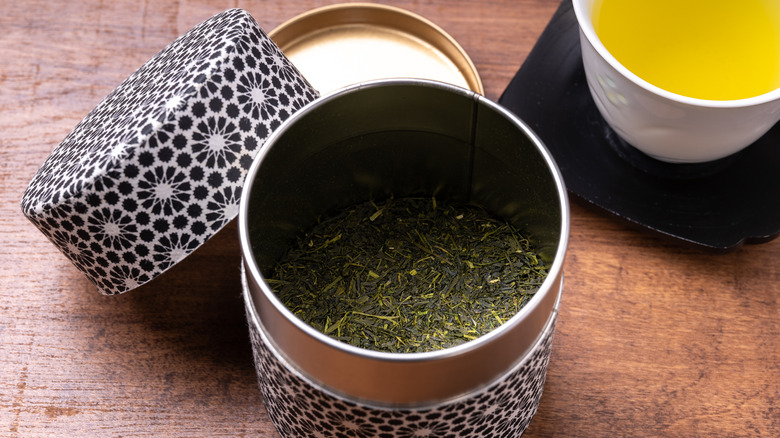How Did The Tea Caddy Get Its Name?
Whether you're a green tea gal, a Darjeeling darling, or an Assam aficionado, any tea drinker is likely to have a small metal tin or simple wooden box with compartments to store your tea bags or loose leaf stash. The tea caddy comes in many forms, from the simple to the extravagant, and it's likely something you take for granted, merely a red telephone box-shaped vessel for the Earl Grey your cousin picked up from a tourist shop on the way home from a semester abroad in London or a simple metal tin you've been using for years.
But tea caddies have a fascinating history that dates back all the way to the 17th century when tea was first brought to England through the Chinese spice trade. Original tea caddies were beautiful handmade porcelain jars painted with blue designs. Later, in the 18th century, renowned furniture designers like Thomas Chippendale fashioned elaborate tea caddies made from mahogany and rosewood, some of which could be kept locked to protect their valuable contents back in the days when tea was still considered to be a great luxury only afforded to the well-heeled in British society.
But have you ever wondered where these storage containers got their unusual name?
The origin of the tea caddy name
Despite being called a caddy, tea containers have nothing to do with golf. Because tea was so valuable in the 17th and 18th centuries, it was priced by a relatively small increment of weight used in China called the catty. The word comes from the Malay word kati, and entered into British use by way of the East India Trading Company, according to the South China Morning Post magazine. A catty is roughly equivalent to 600 grams, or one and a third pounds, and is a traditional unit of measurement still used in wet markets and other traditional retailers in parts of East and Southeast Asia, despite later adoptions of the metric system.
These beautiful porcelain jars tea was transported in during the 17th century became synonymous with the unit of measurement the tea was sold in, and the word catty eventually became anglicized to caddy. The term was brought into popular use by the end of the 18th or early 19th century, and until then these jars were referred to by aristocrats as tea canisters. Tea caddies became symbolic of wealth and status, coming to represent more value than the tea itself. Their large sizes in particular were meant to imply that a household could afford large quantities of expensive tea. Think about that the next time you pull out your tea tin!

